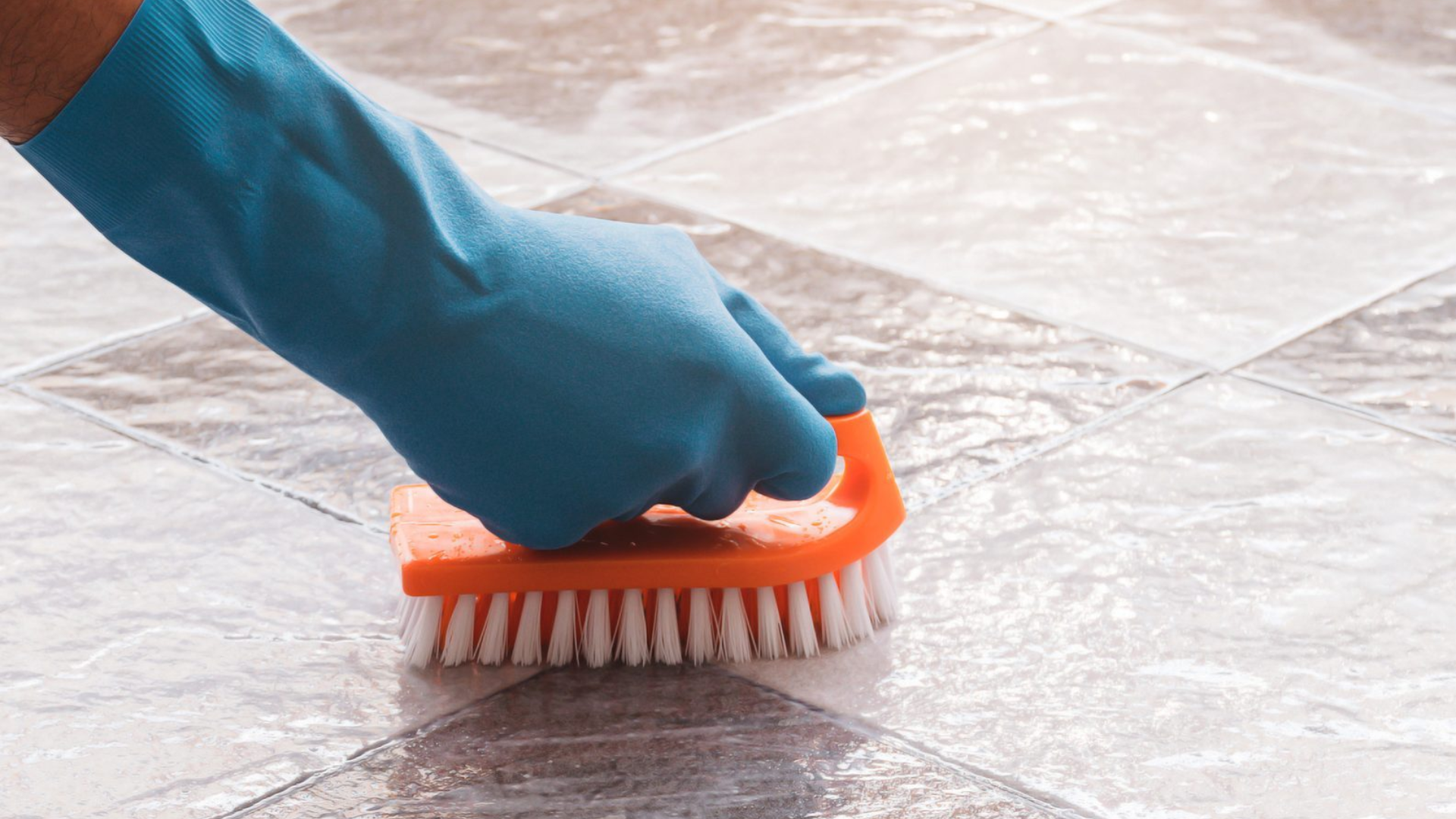Grout is the material between your floor tiles, and over time, I’ve noticed it can collect dirt, stains, and even mold, making floors look worn and messy.
If you’re tired of scrubbing with little success or just not sure where to start, this guide is here to help.
I’ll share simple cleaning methods, effective homemade solutions, and affordable tools that really work.
You don’t need expensive products or expert skills. These tips come from real-life cleaning routines that I’ve seen work in everyday homes.
They’re safe, easy to follow, and actually make a difference. If you’ve been looking for a way to clean your tile grout and keep it looking fresh, you’re in the right place.
This article gives you clear steps to bring back that clean, bright look.
What Is Grout?
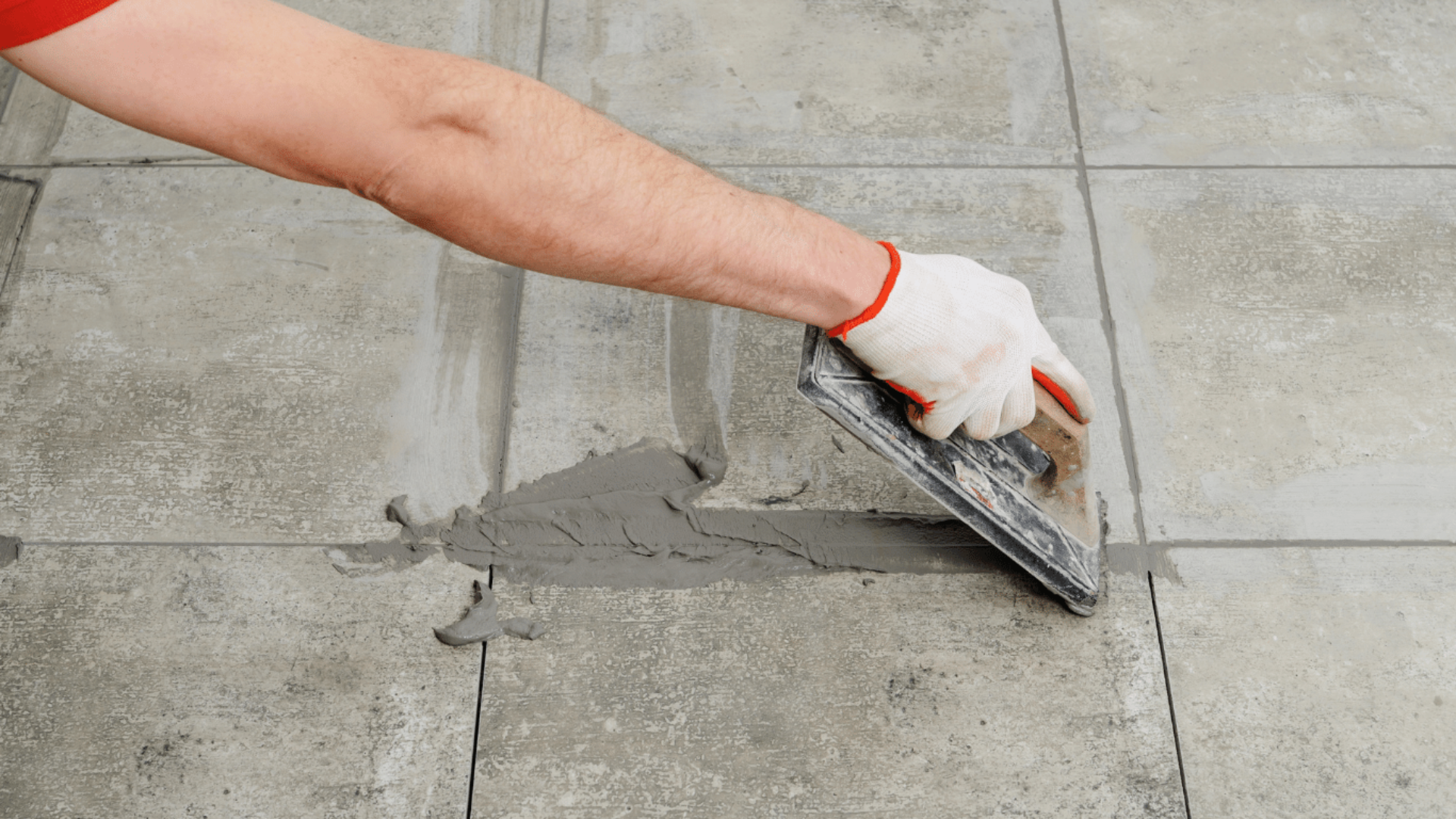
Grout is a dense fluid or paste used to fill the gaps between tiles after they have been installed.
Its primary function is to hold tiles in place, prevent moisture from seeping underneath, and enhance the durability and appearance of the tiled surface.
Though often overlooked, grout plays a vital role in the overall performance of tile installations, whether on floors, walls, or counters.
The main functions of grout are:
- Stabilization: Grout locks tiles in position, reducing movement and preventing cracks.
- Protection: It blocks dirt, liquids, and other debris from settling beneath tiles.
- Appearance: Grout lines provide a finished, uniform look and can complement the tile color.
Types of Grout
Different types of grout are available depending on the width of the tile joints and the kind of surface being tiled. The two most common types are sanded and unsanded grout.
Sanded Grout
It is made by mixing cement and fine sand particles. This added texture gives the grout extra strength and reduces the chance of shrinking as it dries.
It is most suitable for tile joints that are wider than 1/8 inch, which are common in floor installations.
Unsanded Grout
It has a smooth, soft texture and does not include sand.
Due to its finer texture, it is designed for smaller joints, 1/8 inch wide or less, where precision and ease of application are crucial.
Why Does Grout Get Dirty?
Grout tends to get dirty because of its porous surface. It absorbs whatever comes into contact with it, from dust to moisture. Below are the main causes:
- Porous texture: Grout soaks up liquids, oils, and dirt, unlike smooth tile surfaces that resist absorption.
- Foot traffic: Regular walking over tiled areas pushes dirt, sand, and grime into the grout lines, especially in entryways and hallways.
- Spilled food and drinks: Beverages like coffee, juice, and wine can stain grout if not wiped up quickly.
- Mold and mildew: Grout in areas with high humidity, such as bathrooms and laundry rooms, may retain moisture, which encourages mold or mildew growth.
- Improper sealing: Unsealed or poorly sealed grout absorbs more contaminants, making it harder to keep clean over time.
Tools and Materials Needed
To clean grout effectively, you don’t need complex equipment. A few basic items will get the job done:
- Stiff-bristled brush or old toothbrush: Use a firm brush to scrub grout lines. A firm brush helps loosen dirt without damaging tiles.
- Bucket of warm water: Used for rinsing the area before and after cleaning.
- Cleaning solution (store-bought or homemade): Choose a mild cleaning agent. For a more natural option, mix baking soda and water or use a vinegar-based solution.
- Mop and clean cloths: For wiping down tiles and drying the surface once cleaning is complete.
- Optional (Steam cleaner): Useful for deep cleaning large areas or heavily stained grout without chemicals.
Homemade Grout Cleaning Methods
You don’t always need expensive products to clean grout. Several common household ingredients can help safely and affordably remove dirt, stains, and buildup.
1. Baking Soda and Water
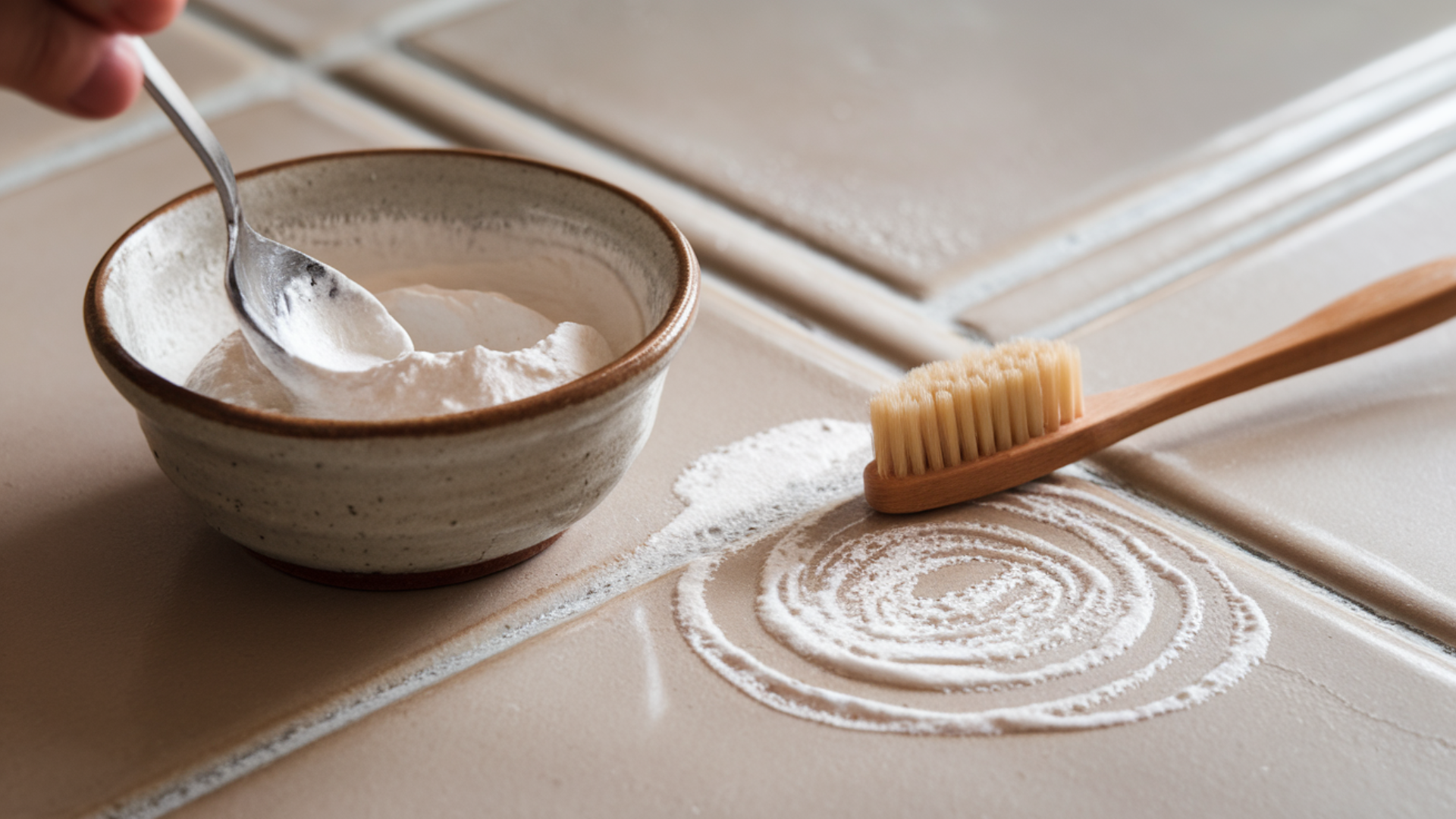
This is one of the most basic and gentle ways to clean grout. Mix equal parts of baking soda and water in a small bowl until a thick, spreadable paste forms.
Use your fingers or a spoon to apply this paste directly onto the grout lines.
Allow it to sit for 5 to 10 minutes to loosen surface dirt. Use a stiff-bristled brush or an old toothbrush to scrub the area using small circular motions.
Once the scrubbing is complete, rinse the surface with warm water and wipe it clean with a soft cloth.
2. Vinegar and Baking Soda
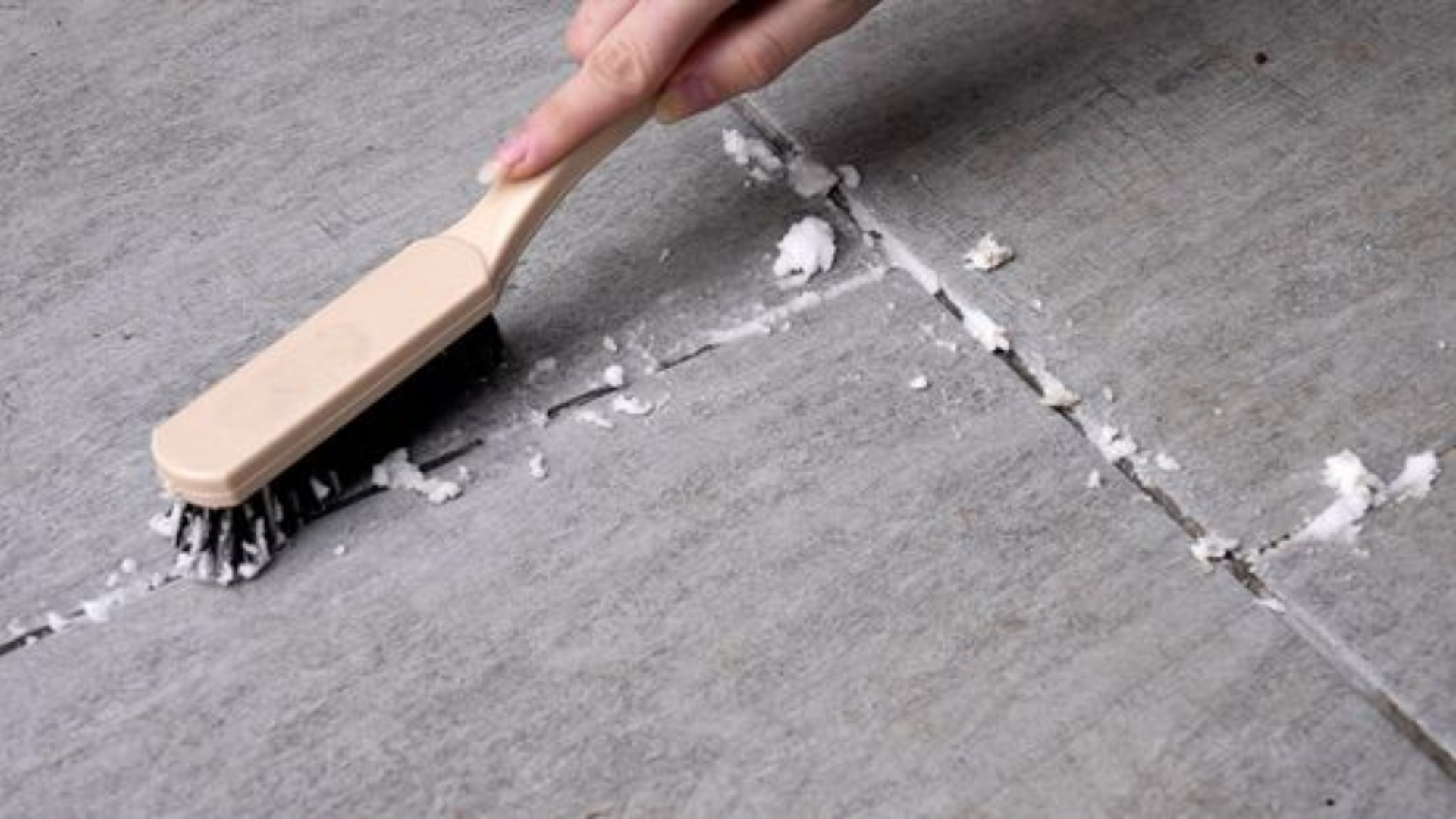
For a stronger reaction to tackle dirt and mild stains, this method combines the natural acidity of vinegar with the scrubbing power of baking soda.
First, sprinkle a thin layer of dry baking soda onto the grout lines.
Then, spray or drizzle white vinegar over the baking soda. The bubbling reaction helps lift grime from the grout.
Let the mixture sit for about 5 minutes. After the bubbling subsides, scrub the grout with a brush. Rinse thoroughly with warm water.
3. Hydrogen Peroxide and Baking Soda
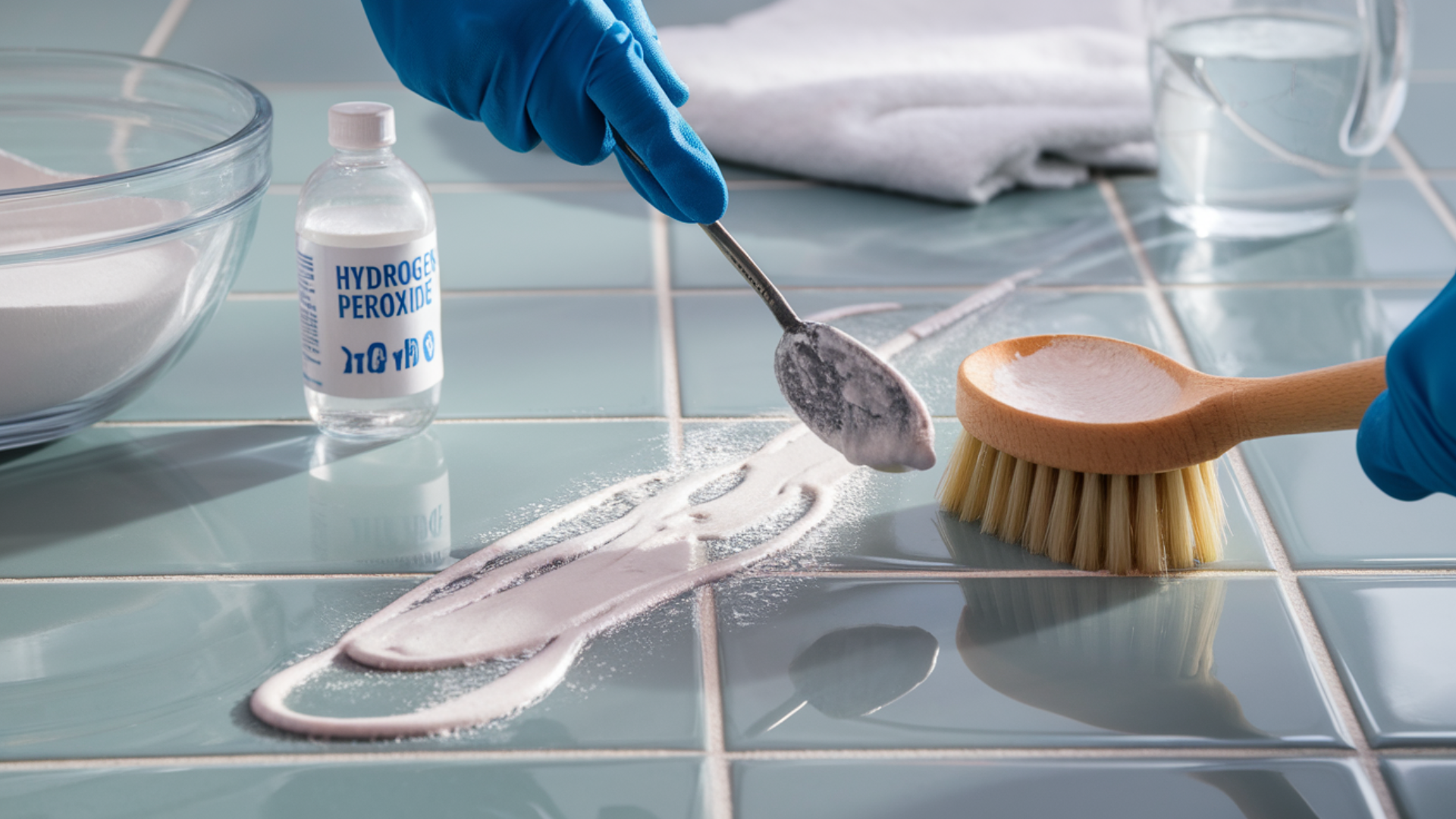
This solution is effective for tackling darker stains and more stubborn buildup.
Mix about one part hydrogen peroxide with two parts baking soda to create a thick paste. Apply the paste to the grout lines, making sure it fully covers the stained areas.
Let it sit for 10 minutes to break down the dirt. Then, scrub the area with a brush and rinse with water.
Hydrogen peroxide helps to disinfect as well, making this option great for areas like bathrooms where hygiene is especially important.
4. Lemon Juice
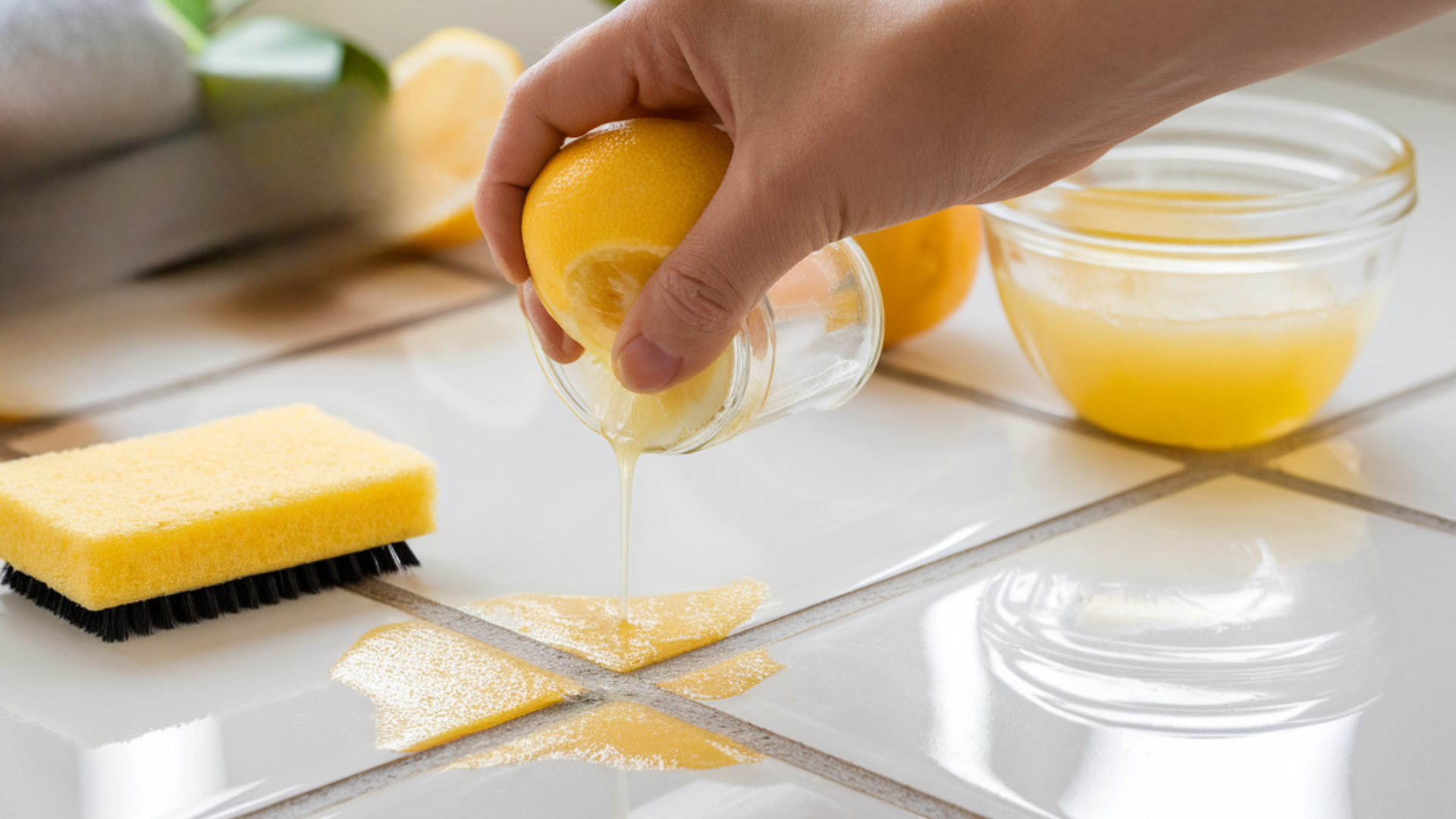
Lemon juice contains natural acids that help clean and brighten grout lines.
Pour it directly onto the grout or apply it with a sponge. Let it sit for a few minutes, especially in areas where the grout appears discolored.
Scrub the lines gently using a brush or sponge, then rinse thoroughly. The fresh scent of lemon is also a bonus, leaving the area smelling clean.
While it’s not as strong as other methods, lemon juice is a good option for light stains and regular maintenance.
5. Dish Soap and Warm Water
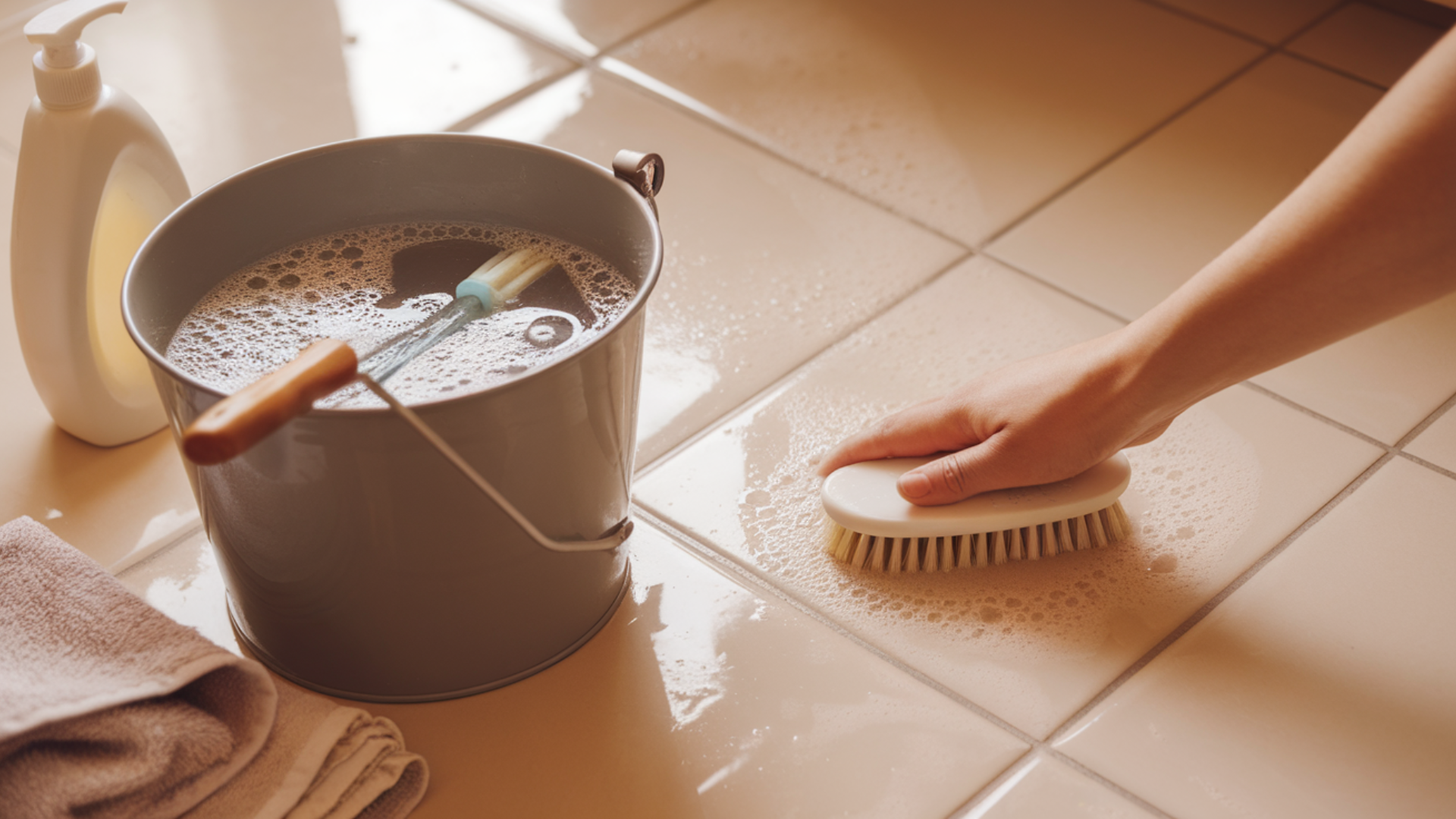
For a mild and safe cleaning method suitable for frequent use, mix a few drops of liquid dish soap into a bucket of warm water.
Dip a brush into the soapy water and scrub the grout lines.
This gentle method can be used on almost any type of tile. It works well for removing recent spills, light surface dirt, or as a regular upkeep routine.
After scrubbing, rinse the area with clean water and dry it with a soft cloth.
6. Oxygen Bleach (such as OxiClean)
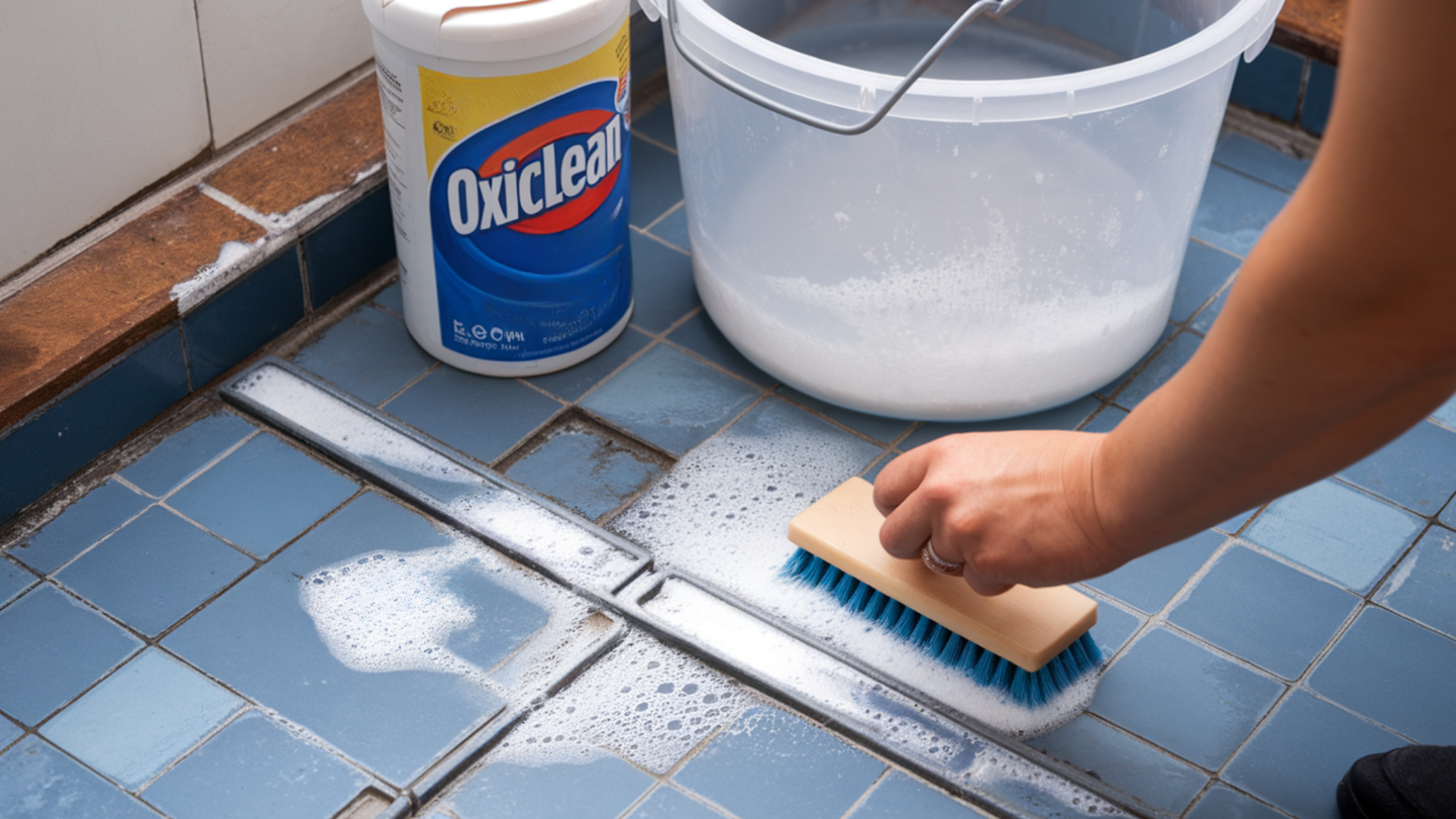
Oxygen bleach is a powdered cleaner that becomes active when mixed with water. To prepare the solution, follow the instructions on the product label.
Apply the liquid mixture generously over the grout lines and allow it to sit for 10 to 15 minutes, allowing it to break down deep-set stains.
After waiting, scrub the grout with a firm brush and rinse well with water. ‘
Always test the solution in an out-of-sight area before using it more broadly, as it may affect some tile finishes.
Oxygen bleach is effective for tougher stains and older grout lines that haven’t been cleaned in a while.
7. Commercial Grout Cleaners
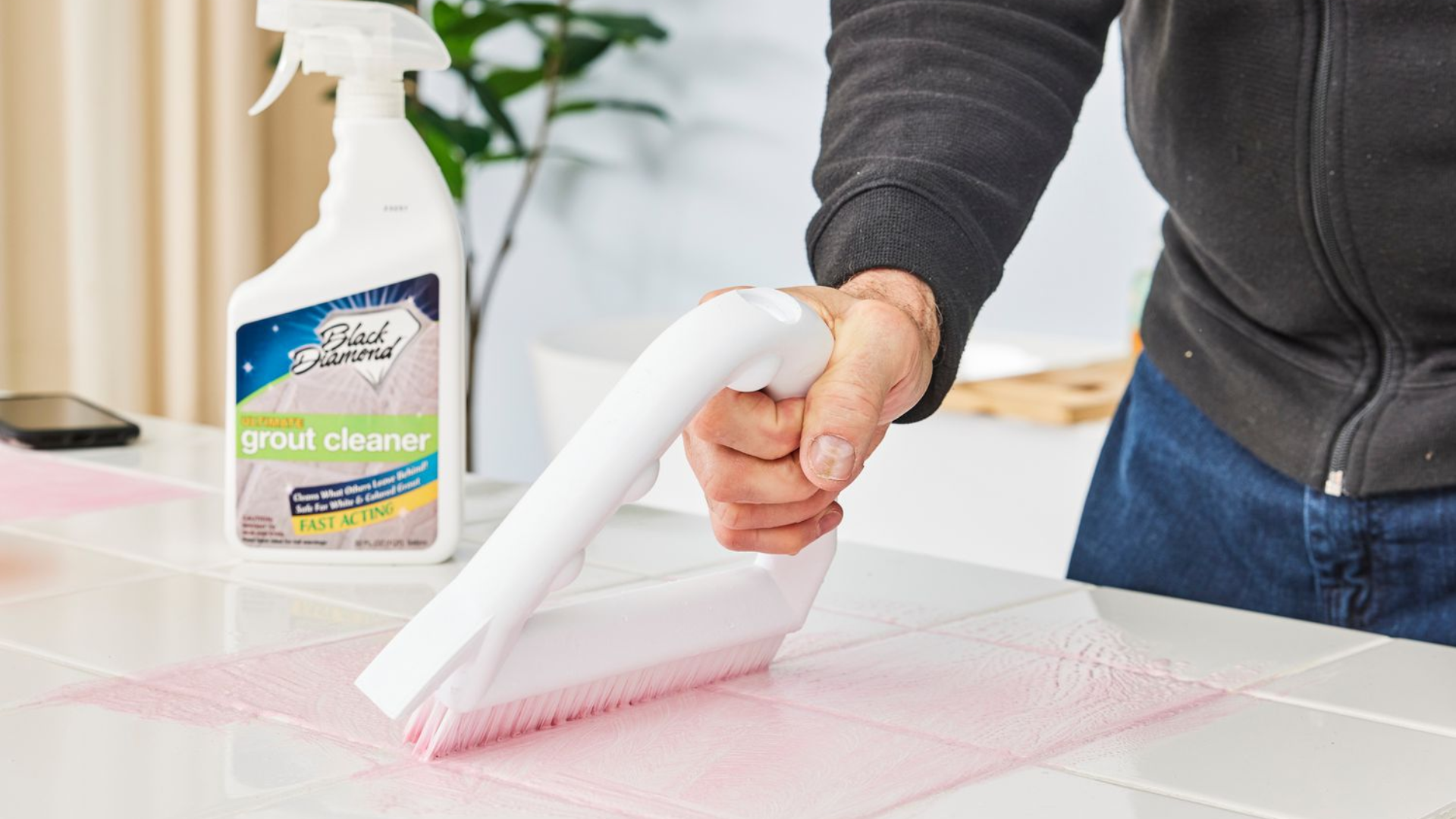
If homemade solutions aren’t enough, you can turn to store-bought grout cleaners designed specifically for tile surfaces.
These products often contain stronger cleaning agents that can tackle deeply stained grout.
Be sure to follow the manufacturer’s instructions exactly, especially regarding the duration of use and whether protective gear is required.
Many of these cleaners are best reserved for occasional use when gentler methods haven’t worked.
Step-by-Step Grout Cleaning Process
Cleaning grout doesn’t need to be complicated. Below is a simple and effective step-by-step guide to help you get the best results.
- Prepare the Area: Sweep or vacuum the floor to remove loose dirt and debris. This prevents grit from getting pushed into the grout during cleaning.
- Apply Cleaning Solution: Choose a cleaning method that fits your needs. Apply the solution directly to the grout lines using a spray bottle, sponge, or brush. Let it sit for a few minutes.
- Scrub the Grout: Use a stiff-bristled brush or an old toothbrush to scrub the grout. Work in small sections for better results.
- Rinse the Area: Use clean water and a mop or sponge to rinse away any remaining cleaner. Repeat if needed to remove all residue.
- Dry the Area: Wipe the surface with a dry cloth to remove moisture and prevent dirt from settling back into the grout.
Tips for Keeping Grout Clean
Once your grout is clean, the next step is keeping it that way. The tips below are easy to follow and can make a noticeable difference with minimal effort.
- Clean spills right away: When liquids like juice, coffee, or sauces fall on the floor, wipe them up immediately. The longer a spill sits, the more likely it is to soak into the grout and leave a stain.
- Mop regularly: Regular mopping with a mild cleaning solution helps remove dirt before it settles into grout lines. Focus on high-traffic areas, which tend to collect more dust and grime.
- Apply grout sealer: Sealing grout after a thorough cleaning helps protect it from moisture and stains. A good sealer acts as a barrier, making it easier to maintain clean grout in the long run.
- Avoid harsh chemicals: Strong acids or bleach-based cleaners can weaken grout and wear it down over time. Stick to gentle, tile-safe cleaners to preserve the grout’s condition.
- Use a soft brush for spot cleaning: For quick cleanups between deep cleaning sessions, use a small brush and warm water. This helps keep the grout fresh without needing a full cleaning routine each time.
Conclusion
Keeping grout clean makes a big difference in how tiled surfaces look and last.
I’ve found that clean grout not only improves appearance but also prevents long-term damage from dirt, moisture, and stains.
With a few simple habits, like wiping spills quickly, mopping with a mild solution, and sealing grout, you can avoid deep scrubbing later.
Even high-traffic areas stay in good shape with regular care.
You don’t need fancy tools. I usually use a brush, warm water, and basic cleaners, and they work well. The steps in this guide are easy to follow and don’t take much time.
With minimal effort, you can keep your grout looking fresh and your tiled spaces strong and neat for years. A little routine care does go a long way.


